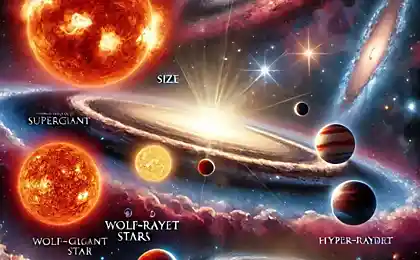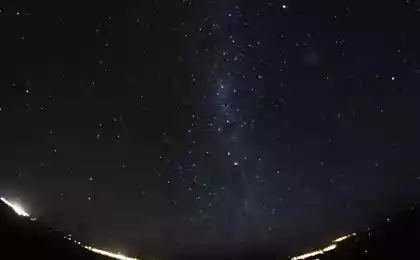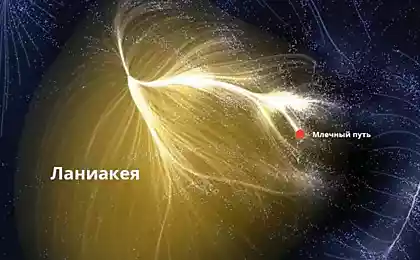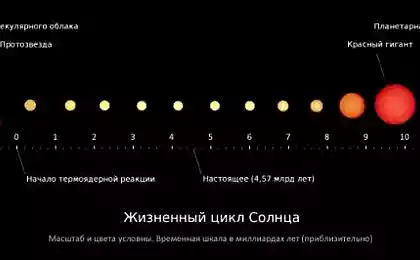702
The paradox of Olbers: why in the night sky with so few stars
The universe is infinite, and there is no number the stars. In the middle of the forest, which is less than the Universe, and trees not so much as stars you can't see the gaps — the field of view closes the trunks and the leaves.
Why, then, the night sky not filled with stars? This is the paradox of Olbers, or photometric paradox. Today we find him a solution.
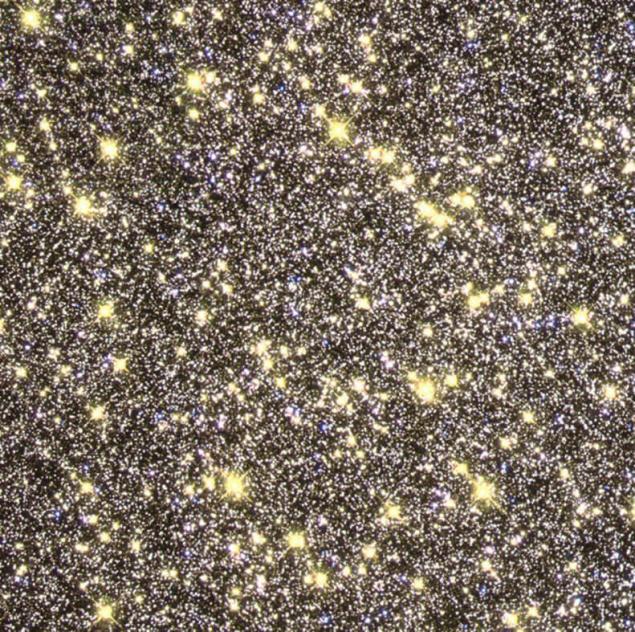
So many stars on a small square of the sky sees a powerful telescope. The point is that there should be more.
Science vs. Logic
The mystery of why in the night sky with so few stars, tormented astronomers even in the scientific Mature XIX century. In telescopes, though, the scientists saw much more of the world — but less than burning in the vast Universe. Under the arches of the scientists heads, logic asserted that the night sky should look approximately as in the animation alongside.
The solution of the paradox was even easier than the language.
Stars-invisible
Let's start with the fact that astrologers of the past Millennium is not so wrong. The photo below was made by the orbital telescope named Hubble (incredibly cool device). Pictured here is a piece the size of 1/13,000,000 the entire celestial sphere.
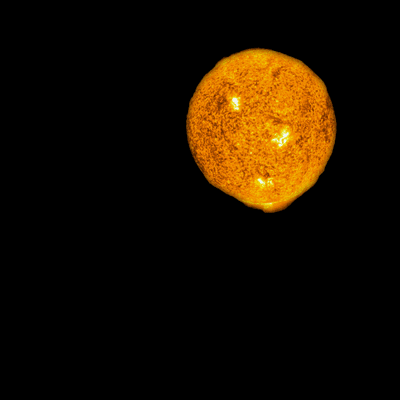
The sky is the Paradox of Olbers
All these colored stars — the galaxies that are invisible to the eye. To make the telescope had to go into space, use ultra-sensitive matrix and the frame to withstand more than 11 days! Such technologies have appeared only at the end of the last century.
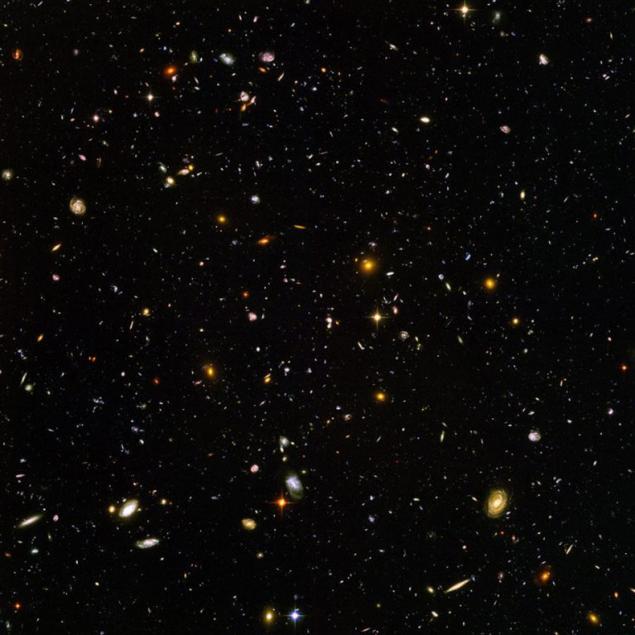
Hubble Ultra Deep Field
If people saw all the same that the space telescope, the night sky would be as bright as the center sleeves of our milky Way! But still there are black gaps that the paradox of Olbers denies. The solution of these voids lies in the same reason why the galaxy are hidden from the naked eye.
The universe is expanding too fast
We have already discussed together how and why the world around us swells. Briefly, light from distant galaxies travels a longer distance to us than it was in that moment when he left the house. This creates the effect of redshift — frequency and the energy of the rays of distant stars is reduced.
What follows from this? There are such a distant star, the rays from which will fade before you reach to the Ground. Therefore, in the black abysses of space still have the light — it's just that we never see.
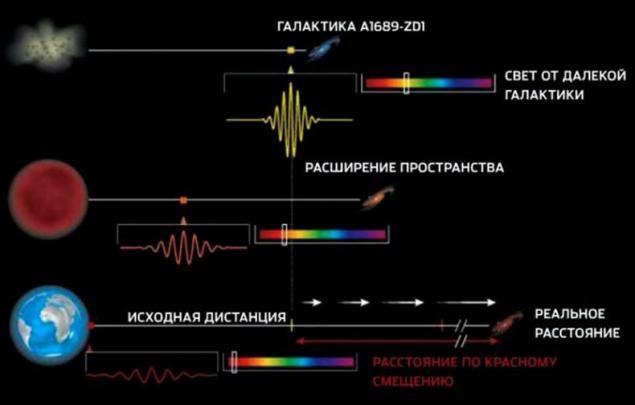
The red shift
By the way, distance is the main source of photometric paradox About this below.
To reach Earth, light takes time. 149 600 000 km from the Sun to us it passes for 8.3 minutes, and 81360544648396 kilometers from the star Sirius — 8.6 years. The greater the distance, the longer the light to go, everything is clear.
The age of our Universe is about 13.8 billion years. But the size of the space, endless! The most powerful telescopes can detect light from the distance-time in 12-13 billion years. So, a lot of galaxies is invisible — they are so far away that the radiation is not physically have time to fly even in the form of the elusive neutrino!
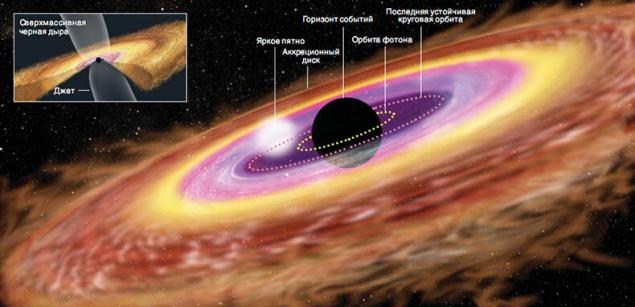
The event horizon is directly related to why black holes are black.
As the universe expands, the light has to overcome even greater distance. And once on the margins of the world the extension will be equal to the speed of light — this will set the so-called event horizon. It will push us all closer, until no longer be visible to even the nearest stars.
This will only happen if the extension does not stop, and then after many billions of years. Recently we wrote about the large-scale cosmic catastrophes — even their catch easier than to wait for the event horizon at the threshold of the house.
Finally
SUBSCRIBE to OUR youtube channel that allows you to watch online, download from YouTube free video about the recovery, the rejuvenation of man. Love for others and ourselves, as the feeling of high vibrations — an important factor
It turns out that the mystery of Olbers and not a paradox at all — just the laws of physics don't allow all the stars to dazzle our eyes. However, scientists do not stop, and they continue to discover new stars.published
Put LIKES and share with your FRIENDS!
www.youtube.com/channel/UCXd71u0w04qcwk32c8kY2BA/videos
Subscribe — www.facebook.com//
20 exciting science series about all10 pseudo-discoveries that shocked the scientific world
Source: spacegid.com/olbers-paradox.html
Why, then, the night sky not filled with stars? This is the paradox of Olbers, or photometric paradox. Today we find him a solution.

So many stars on a small square of the sky sees a powerful telescope. The point is that there should be more.
Science vs. Logic
The mystery of why in the night sky with so few stars, tormented astronomers even in the scientific Mature XIX century. In telescopes, though, the scientists saw much more of the world — but less than burning in the vast Universe. Under the arches of the scientists heads, logic asserted that the night sky should look approximately as in the animation alongside.
The solution of the paradox was even easier than the language.
Stars-invisible
Let's start with the fact that astrologers of the past Millennium is not so wrong. The photo below was made by the orbital telescope named Hubble (incredibly cool device). Pictured here is a piece the size of 1/13,000,000 the entire celestial sphere.

The sky is the Paradox of Olbers
All these colored stars — the galaxies that are invisible to the eye. To make the telescope had to go into space, use ultra-sensitive matrix and the frame to withstand more than 11 days! Such technologies have appeared only at the end of the last century.

Hubble Ultra Deep Field
If people saw all the same that the space telescope, the night sky would be as bright as the center sleeves of our milky Way! But still there are black gaps that the paradox of Olbers denies. The solution of these voids lies in the same reason why the galaxy are hidden from the naked eye.
The universe is expanding too fast
We have already discussed together how and why the world around us swells. Briefly, light from distant galaxies travels a longer distance to us than it was in that moment when he left the house. This creates the effect of redshift — frequency and the energy of the rays of distant stars is reduced.
What follows from this? There are such a distant star, the rays from which will fade before you reach to the Ground. Therefore, in the black abysses of space still have the light — it's just that we never see.

The red shift
By the way, distance is the main source of photometric paradox About this below.
To reach Earth, light takes time. 149 600 000 km from the Sun to us it passes for 8.3 minutes, and 81360544648396 kilometers from the star Sirius — 8.6 years. The greater the distance, the longer the light to go, everything is clear.
The age of our Universe is about 13.8 billion years. But the size of the space, endless! The most powerful telescopes can detect light from the distance-time in 12-13 billion years. So, a lot of galaxies is invisible — they are so far away that the radiation is not physically have time to fly even in the form of the elusive neutrino!

The event horizon is directly related to why black holes are black.
As the universe expands, the light has to overcome even greater distance. And once on the margins of the world the extension will be equal to the speed of light — this will set the so-called event horizon. It will push us all closer, until no longer be visible to even the nearest stars.
This will only happen if the extension does not stop, and then after many billions of years. Recently we wrote about the large-scale cosmic catastrophes — even their catch easier than to wait for the event horizon at the threshold of the house.
Finally
SUBSCRIBE to OUR youtube channel that allows you to watch online, download from YouTube free video about the recovery, the rejuvenation of man. Love for others and ourselves, as the feeling of high vibrations — an important factor
It turns out that the mystery of Olbers and not a paradox at all — just the laws of physics don't allow all the stars to dazzle our eyes. However, scientists do not stop, and they continue to discover new stars.published
Put LIKES and share with your FRIENDS!
www.youtube.com/channel/UCXd71u0w04qcwk32c8kY2BA/videos
Subscribe — www.facebook.com//
20 exciting science series about all10 pseudo-discoveries that shocked the scientific world
Source: spacegid.com/olbers-paradox.html
Lost virtue women that don't need to earn, to acquire or train
100 of the most romantic books that are worth reading




